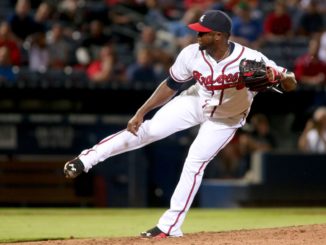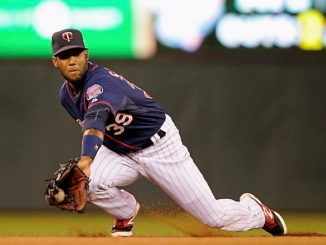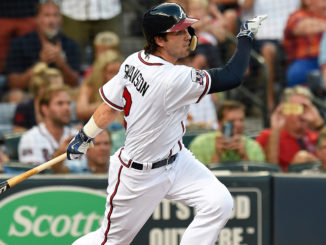Just before Thursday’s trade deadline, the Braves traded prospect Victor Caratini to the Chicago Cubs for lefty reliever James Russell, utility man Emilio Bonifacio, and $1,000,000. Let’s take a look at each piece involved:
James Russell
The 28 year old lefty was a 3rd round pick by the Cubs in 2007. He came from a MLB pedigree, as his father Jeff was a successful closer in the 80’s and 90’s, picking up 186 saves and winning the 1989 Rolaids Relief award. Beginning life in the minors as a starter, he switched to relief after a disastrous promotion to AA in 2008 left him with a 6.36 ERA. He debuted in 2010, where he was a nice reliever (3.82 K/BB) with one glaring weakness: giving up home runs. Russell has always been a fly ball pitcher, which never meshed well with the friendly confines. Check out Russell’s career home/road splits:
Home: .257/.317/.468; 11.6% HR/FB
Road: .245/.310/.421; 7.8% HR/FB
Those differences are significant enough for Russell to breathe a sigh of relief now that he has moved on to another home. His K rate usually rests in the 17-18% range, and he typically walks around 7% of those he faces, although this year has seen a spike in walks. That spike has been particularly recent, so the onus is on the Braves to figure out if there is some kind of mechanical issue.
Russell’s platoon splits have traditionally been what you’d expect (good against fellow southpaws, worse against righties), but this year has seen a complete reversal. I’m not sure if that’s due to increased changeup and cutter usage, and using his slider less, possibly in some concerted effort to keep the ball on the ground more; that’s something he’s managed to do, topping 40% ground balls for the first time in his career. The option is just statistical noise. It happens, especially over samples as small as the 33.1 innings he’s pitched.
Either way, he’s a lefty arm with some talent that’s under team control for 2015, so there’s some potential value for Atlanta here. And considering the exorbitant price Baltimore paid for Andrew Miller, you can’t blame the Braves for targeting a lower quality lefty.
Emilio Bonifacio
Bonifacio is an exciting addition, if only because of the versatility he brings to the team. Jordan Schafer is no longer, thank goodness, the primary backup OF. Even better, Bonifacio supplants Ramiro Pena as the primary backup at 2B. He can play all over, and he’s pretty handy with the glove everywhere he goes. His bat isn’t impressive, hitting .279/.318/.373 this year, but his baserunning is strong, and he has 14 steals at a 70% rate to offer.

The 29 year old switch hitter brings to Atlanta a career .292/.339/.376 line against LHP (including .408/.432/.592 this year) and a .253/.315/.332 line against RHP.
But focusing on the batting line is missing the point to an extent. This frees Atlanta up to make August moves and not feel tied to any particular bench player. Jordan Schafer was the only backup OF, so he couldn’t go anywhere. Ramiro Pena was the backup 2B. Those two players, despite awful seasons, have been pretty bulletproof so far in roster decision-making, mostly thanks to the dearth of options to replace either. By picking up Bonifacio, the Braves no longer are handcuffed to either. Freedom with roster moves is the best thing a player like Bonifacio provides, likely on par with his defense and baserunning.
Bonifacio is a free agent at the end of the season.
Victor Caratini
Farewell, intriguing C/3B prospect with a stick. Drafted in the 2nd round last year, Caratini has hit .279/.352/.406 in A ball this season. Scouts like the bat, though they may not like his chances of sticking at C. If he does, this trade is a winner for the Cubs. His bat will likely be above-average for a backstop. If he moves to 3B, he still has future value, but the margin of error is smaller. The Braves didn’t really have many promising bats in the minors, so trading one isn’t ideal, but he’s low enough in the system and with enough positional uncertainty to not be overly worried about what might have been.




Leave a Reply